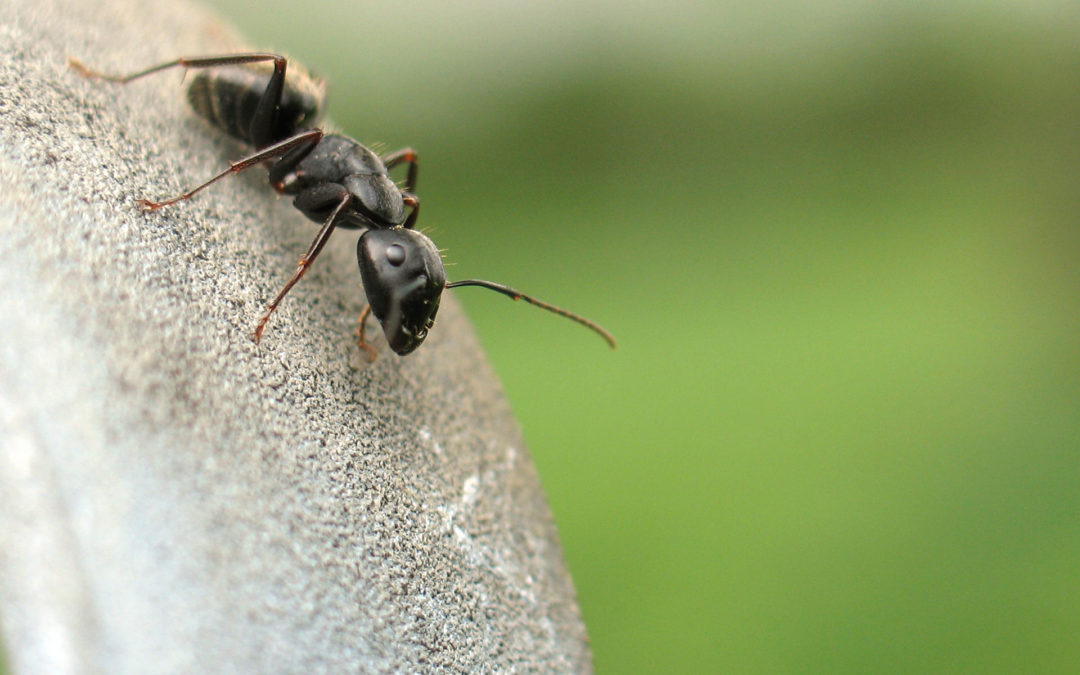How to handle one of Maryland’s toughest pests: Ants.
In the kitchen, bathroom, living room, office…everywhere! Large and small, ants seem to come out of thin air. You may not know where they’re coming from, but we can assure you, there’s never just a few. Ants are social pests, they nest and colonize and a Queen lays eggs until she dies. That’s why there are really only two ways to help any ant problem—call a pest control expert like Eco Care Pest Management or prevention.
Maryland’s Most Common Ant Species
With over 12,000 ant species in the world, it may seem impossible to know which ones are the most prevalent in Maryland, but it’s not. Let’s break down each type so you can handle your specific problem, and prevent it.
Odorous House Ants are stinky! When crushed they give off a rotten coconut smell. They are one of the most invasive pests by far. It is a small brown to blackish ant, only 1/8 inch in length. Although they don’t cause damage like carpenter ants and termites, their nesting and foraging behavior into homes for food, moisture, and shelter can be extremely irritating. The foragers can be seen crawling around on floors, walls, and cabinets especially in kitchens and baths. Control can be difficult to achieve for homeowners due to the sheer numbers in a colony (500,000-1 million), the dispersal nature of the nests, and their general avoidance of baits. Removing leaf debris from around the foundation of the home, trimming back branches and shrubs from touching the house, and not over mulching can help reduce nesting sites.
Acrobat Ants don’t actually do circus acts, but will arch their heart-shaped abdomen over their head when disturbed. In homes they like to nest in the same areas that Carpenter Ants do, especially areas subjected to high moisture and fungal decay. They are much smaller then Carpenter Ants, only 1/8” long. Trim back any trees or shrubs touching your home to prevent the ants easy access to the inside.
Carpenter Ants build their nests inside of wood, tunneling and removing wood along the way. They can damage decks, walls, floor boards and foundations, like a termite. They are red, black, or a mix in color and can have wings. To prevent infestation, be sure to repair leaks, replace water-damaged wood and check gutters to avoid sitting water. Store firewood away from your home and try to keep it dry and trim any trees or bushes so they do not come into contact with your home.
Pavement Ants derive their name from nesting in and around cracks in pavement. They commonly push up piles of soil from cracks and seams along sidewalks, driveways, and patios. Although only 1/16 – 1/8” long, the workers can bite and sting. They will forage into homes for food and nesting sites. They are not a health concern, although can contaminate food when they come into contact with it. It’s best to seal cracks in your home’s foundation, windows and doors, and clean up food messes immediately into sealed containers.
These small pests aren’t going anywhere, but if you follow our prevention tips, you may have better luck avoiding them. If you do happen to find yourself face-to-face with ants, an insect spray may be your best temporary solution, although you’ll be disappointed when they return quickly.
 Need to knock out an ant problem?
Need to knock out an ant problem?
Call Eco Care Pest Management for a FREE consultation and expert insect termination. Or if you need help with pest identification, Ask Erich, our board certified entomologist. He’ll quickly identify your pest and find a solution for your problem—you can quickly and easily submit a question through our website.

